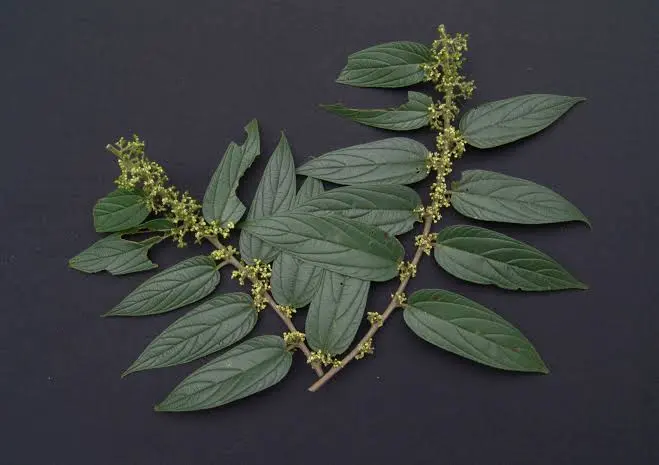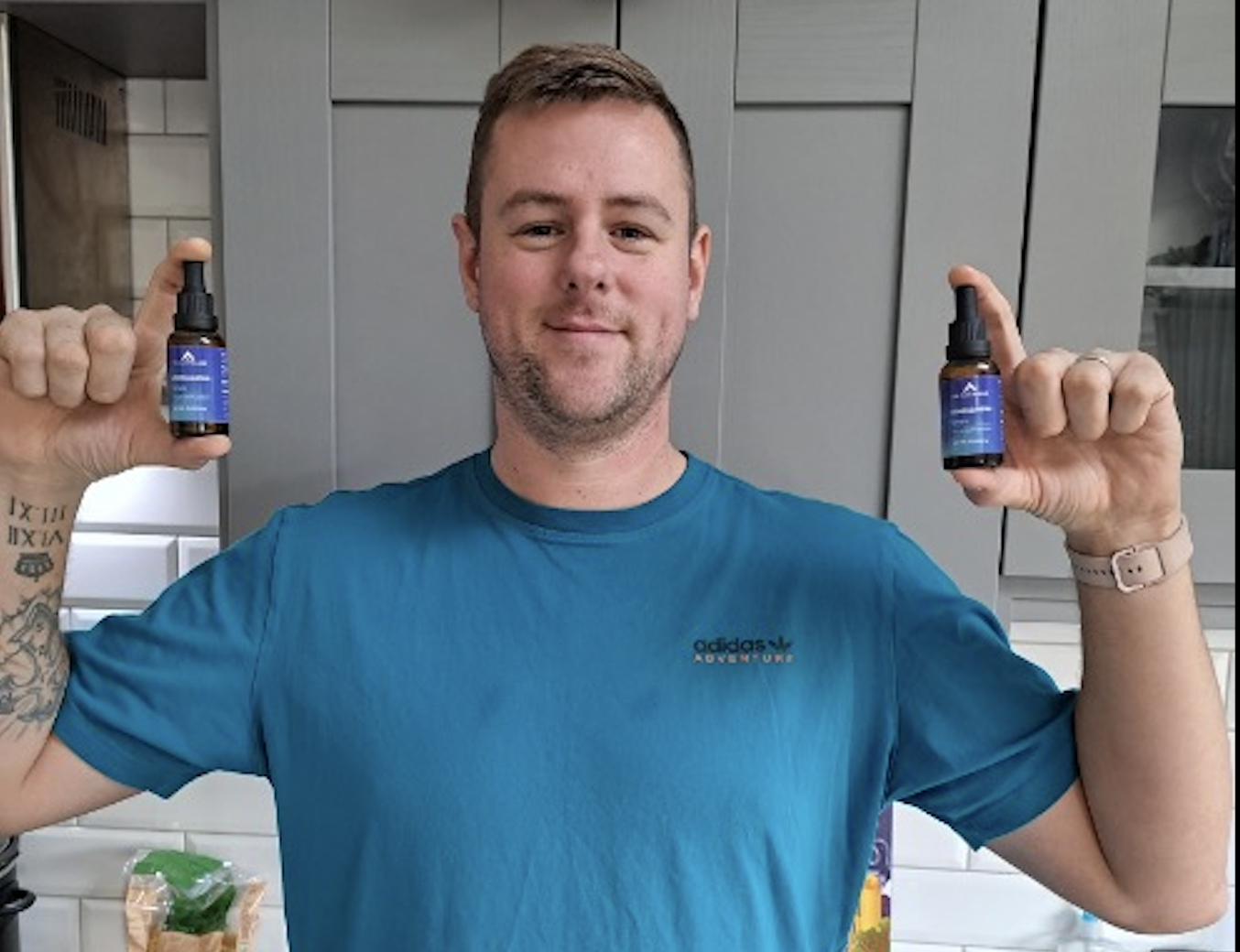If you’re reading this, you either replied to our email about Lion’s Mane and memory, or you’re one of the people considering joining our community replication study.
Either way, you deserve to know exactly what the science says.
Not marketing spin. Not cherry-picked data. The full picture.
This breakdown covers the two most important Lion’s Mane studies for cognitive function:
- Mori et al., 2009 — The landmark human clinical trial
- Martínez-Mármol et al., 2023 — The mechanistic breakthrough study
Let’s start with the study that changed everything.
Study #1: The Mori Study (2009)
Full Citation
Mori K, Inatomi S, Ouchi K, Azumi Y, Tuchida T. “Improving effects of the mushroom Yamabushitake (Hericium erinaceus) on mild cognitive impairment: a double-blind placebo-controlled clinical trial.” Phytother Res. 2009 Mar;23(3):367-72.
Why This Study Matters
Before 2009, Lion’s Mane (Hericium erinaceus, also called Yamabushitake in Japan) was primarily studied for:
- Nerve regeneration in peripheral nerves
- NGF (nerve growth factor) stimulation in cell cultures
- General neuroprotective effects in animal models
But there was no human data showing it could actually improve cognitive function in people with memory concerns.
The Mori study changed that.
It’s the first (and for a long time, the only) double-blind, placebo-controlled clinical trial testing Lion’s Mane specifically for cognitive impairment in older adults.
This is the study that every reputable Lion’s Mane supplement company cites when they talk about “clinically studied for brain health.”
The question is: Does what’s in their bottle match what was in this study?
More on that later.
Study Design: What They Actually Did
Population:
- 50 participants (30 in Lion’s Mane group, 20 in placebo)
- Aged 50-80 years old
- Diagnosed with mild cognitive impairment (MCI)
- Recruited from medical clinics in Japan
What is MCI? It’s the stage between normal age-related memory decline and dementia. People with MCI notice memory problems, others might notice too, but it’s not severe enough to interfere significantly with daily life. About 10-20% of people over 65 have MCI, and it often (but not always) progresses to dementia.
Intervention:
- Lion’s Mane group: Four 250mg tablets, taken three times per day = 3,000mg (3g) total daily
- Placebo group: Identical-looking tablets with no active ingredient
- Duration: 16 weeks of supplementation
- Follow-up: 4 weeks after stopping (to see if effects lasted)
Source Material: The tablets contained dried powder of Lion’s Mane fruiting bodies (the actual mushroom, not mycelium grown on grain). The mushroom was cultivated in Japan specifically for this study.
Key Detail: This was a double-blind study, meaning neither the participants nor the researchers knew who was getting Lion’s Mane vs. placebo until after the data was analyzed. This is the gold standard for eliminating bias.
How They Measured Cognitive Function
The researchers didn’t just ask people “do you feel smarter?”
They used a validated assessment tool called the HDSR (Hasegawa Dementia Scale-Revised) which is widely used in Japan to assess cognitive function.
The HDSR tests:
- Orientation (What year is it? What month? What day?)
- Memory (immediate and delayed recall of words)
- Attention and calculation
- Language and repetition
- Visual construction
Scores range from 0-30. Lower scores indicate greater cognitive impairment.
Participants were tested at:
- Baseline (before starting)
- Week 8 (midpoint)
- Week 12
- Week 16 (end of treatment)
- Week 20 (4 weeks after stopping)
The Results: What Actually Happened
Here’s where it gets interesting.
At baseline (week 0):
- Both groups had similar cognitive scores
- Average HDSR score in Lion’s Mane group: ~26 points
- Average HDSR score in placebo group: ~25.5 points
During treatment (weeks 8-16):
The Lion’s Mane group showed progressive improvement in cognitive scores throughout the 16 weeks:
- Week 8: Scores increased to ~27.5 points
- Week 12: Scores increased to ~28.5 points
- Week 16: Scores increased to ~30 points (near-perfect scores)
The placebo group? Their scores stayed essentially the same or declined slightly (which is expected with MCI).
Statistical significance: The difference between groups was significant at week 12 (p<0.05) and highly significant at week 16 (p<0.01).
In plain English: This wasn’t chance. This was a real, measurable improvement.
After stopping (week 20):
This is the part most supplement companies don’t mention.
Four weeks after participants stopped taking Lion’s Mane, their cognitive scores declined back toward baseline.
They didn’t drop all the way back immediately, but the trajectory was clear: the benefits required ongoing supplementation.
What Does This Actually Mean?
Let’s be honest about what this study shows and what it doesn’t.
What it DOES show:
- Lion’s Mane, at 3g daily, can produce measurable cognitive improvements in people aged 50-80 with mild cognitive impairment
- The effects appear dose-dependent and time-dependent (longer use = better results)
- The effects are not permanent — they decline after stopping
- The intervention is safe (no adverse events reported)
What it DOESN’T show:
- We don’t know if it works for people without MCI (healthy adults, younger people)
- We don’t know if it prevents progression to dementia (study wasn’t long enough)
- We don’t know the minimum effective dose (they only tested 3g)
- We don’t know which specific compounds in Lion’s Mane caused the effects
Clinical significance:
A 4-point improvement on the HDSR (which is roughly what the Lion’s Mane group achieved) might sound small, but in the context of MCI, it’s substantial.
For reference:
- A 2-3 point decline per year is typical for untreated MCI
- Pharmaceutical treatments for mild cognitive impairment (like cholinesterase inhibitors) often show similar or smaller improvements
- The participants went from “mild impairment” to “essentially normal” scores
Safety and Tolerability
This is important: No adverse events were reported in the Lion’s Mane group.
No stomach issues. No headaches. No interactions. No participants dropped out due to side effects.
Compare this to pharmaceutical cognitive enhancers, which often cause:
- Nausea and GI distress (common with donepezil/Aricept)
- Dizziness and headaches
- Sleep disturbances
- Loss of appetite
Lion’s Mane appears to be remarkably well-tolerated, even at 3g daily for 16 weeks.
Study Limitations (Being Honest)
No study is perfect. Here are the limitations:
- Sample size: Only 50 people. Larger studies would give us more confidence.
- Single population: All participants were Japanese. We don’t know if results generalize to other ethnicities (though there’s no biological reason to think they wouldn’t).
- Short duration: 16 weeks isn’t very long. We don’t know about effects after 6 months, 1 year, or longer.
- No mechanistic data: The study didn’t measure why it worked — brain scans, neurotransmitter levels, etc. (This is where the 2023 study comes in.)
- Funding source: The study was partially supported by Hokuto Corporation, a Japanese company that sells mushroom products. However, the study design was rigorous and the results were published in a peer-reviewed journal.
The Study-Washing Problem
Here’s why this study matters for choosing a Lion’s Mane supplement:
What the study used:
- 3,000mg per day (3 grams)
- Fruiting body (the actual mushroom)
- Dried powder, but from a quality source
- Dosed three times per day (not once daily)
What most supplements provide:
- 300-500mg per serving (1/10th to 1/6th the studied dose)
- Mycelium grown on grain (not fruiting body)
- Often unspecified extraction method
- Labeled as “clinically studied” (technically true, but misleading)
To match the Mori study, you would need to take:
- 6-10 capsules per day of most consumer Lion’s Mane supplements
- And even then, if it’s mycelium rather than fruiting body, you’re not getting the same compound profile
This is why people try Lion’s Mane and feel nothing.
They’re not taking what the study used.
Study #2: The Mechanism (Martínez-Mármol et al., 2023)
Full Citation
Martínez-Mármol R, Chai Y, Conroy JN, et al. “Hericerin derivatives activates a pan-neurotrophic pathway in central hippocampal neurons converging to ERK1/2 signaling enhancing spatial memory.” J Neurochem. 2023;165(6):791-808.
Why This Study Matters
The Mori study proved that Lion’s Mane works.
The Martínez-Mármol study figured out how.
This 2023 study from the University of Queensland (Australia) is groundbreaking because it:
- Isolated the active compounds responsible for neurotrophic effects
- Identified the mechanism at the cellular level
- Demonstrated effects in both neurons and live animals
- Showed these compounds work through a novel pathway (not just BDNF)
In other words: This isn’t folk medicine anymore. This is molecular neuroscience.
What They Discovered
The Active Compounds:
The researchers isolated and identified specific molecules from Lion’s Mane:
- Hericene A (the star of the show)
- NDPIH (N-de phenylethyl isohericerin)
- Corallocin A
- Other hericerin derivatives
These are aromatic compounds with prenyl side chains — basically, small fat-soluble molecules that can cross the blood-brain barrier.
The Mechanism:
These compounds promote neurite outgrowth (the growth of new neuron branches) and neuritogenesis (the formation of new neural connections) through activation of the ERK1/2 signaling pathway.
Here’s what that means in plain English:
Your brain has signaling pathways that tell neurons to grow, connect, and strengthen their connections. One of the most important is the ERK1/2 pathway, which leads to:
- Growth of axons and dendrites (the “wires” connecting neurons)
- Synapse formation (the connection points between neurons)
- Long-term potentiation (the cellular basis of learning and memory)
The novel finding: Hericene A activates ERK1/2 through a TrkB-independent pathway.
Most neurotrophic compounds (like BDNF, brain-derived neurotrophic factor) work by activating the TrkB receptor. Hericene A doesn’t. It uses a completely different route to arrive at the same destination (ERK1/2 activation).
This means Lion’s Mane can potentially work synergistically with other neurotrophic factors, rather than competing for the same receptor.
The Animal Study Results
They tested Lion’s Mane extracts in mice for 31 days:
Doses tested:
- Crude extract (A1): 100-250 mg/kg per day
- Purified hericene A: Just 5 mg/kg per day
Results:
- Improved spatial memory (measured by Y-maze and novel object recognition tests)
- Increased BDNF, NGF, and other neurotrophins in the hippocampus and cortex
- Increased synaptophysin (a marker of synapse formation)
- Activated ERK1/2 and CREB signaling (molecular markers of learning)
The most remarkable finding: Purified hericene A at just 5mg/kg was equally potent as 250mg/kg of crude extract.
That’s a 50-fold concentration advantage.
Why This Matters for Humans
Translating mouse doses to human doses isn’t straightforward, but researchers often use a conversion factor of about 1:12 (divide mouse mg/kg by 12).
- 5 mg/kg in mice ≈ 0.4 mg/kg in humans
- For a 70kg person, that’s about 28mg of pure hericene A
But here’s the catch: We don’t know the hericene A content of commercial Lion’s Mane extracts.
The Mori study used whole fruiting body powder. It worked. We just don’t know exactly how much hericene A was in it.
The Martínez-Mármol study suggests that extraction method matters enormously — specifically, methods that preserve the aromatic hericerin compounds.
How Dr. Hemp Me Uses This Research
Our Lion’s Mane extract uses ultrasonic-assisted extraction, which is specifically designed to preserve heat-sensitive compounds like hericerins and erinacines.
We dose at 500mg per capsule of concentrated extract, standardized to fruiting body bioactives, designed to deliver the equivalent active compound load used in the Mori study when taken at 6 capsules daily (3,000mg equivalent).
Not because we can claim it works the same (we can’t make medical claims).
But because we believe if you’re going to use science to back your formulation, you should actually match what the science used.
Bottom Line: What Should You Do With This Information?
If you’re considering Lion’s Mane for cognitive support, here’s what the science actually supports:
For whom:
- Adults 50+ with mild memory concerns
- People looking to support cognitive function as they age
- Those interested in neuroprotection (theoretical, not proven)
Dosage:
- The studied dose was 3,000mg (3g) per day of fruiting body
- This should be your target if you want to match the research
Expectations:
- Effects take time (8-16 weeks in the study)
- Benefits require ongoing use (effects declined after stopping)
- Not a miracle cure, but a measurable, modest improvement in cognitive scores
Quality matters:
- Fruiting body > mycelium on grain
- Extraction method matters (preserve hericerins)
- Dose matters (most supplements are drastically underdosed)
The Community Replication Study
If you’re interested in joining our small community group to test this ourselves — using the actual dosages and protocol from the Mori study — reply to the original email.
We’re looking for 10-20 people, ideally:
- Age 50+
- Noticing some memory changes (nothing severe)
- Willing to take Lion’s Mane daily for 16 weeks
- Track simple cognitive assessments weekly
This isn’t a clinical trial. Just a community experiment to see if we can replicate the published research.






